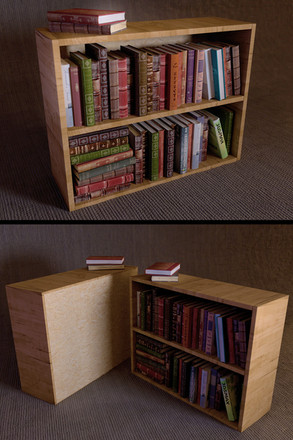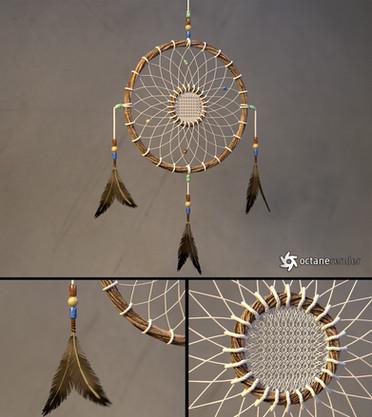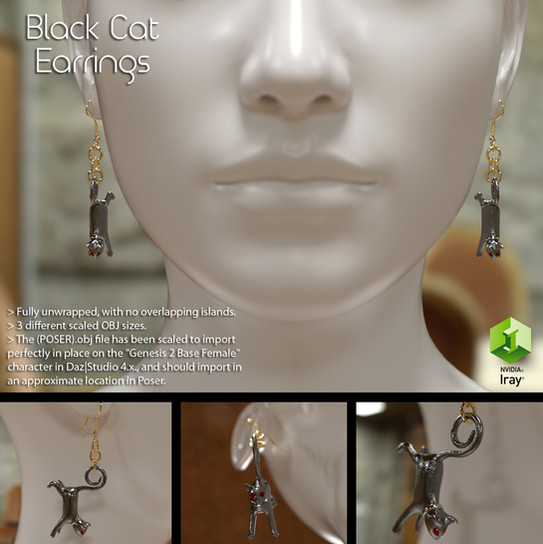HOME | DD
 LuxXeon — Spherical Web
LuxXeon — Spherical Web

Published: 2012-10-04 22:20:40 +0000 UTC; Views: 2004; Favourites: 32; Downloads: 41
Redirect to original
Description
Modeled in 3dsMax, rendered in LuxRender (v1.0).The concept and techniques to create this sphere web are quite simple, but CPU intensive. Perhaps there's an easier way (like using Topmod or some other app), but I decided to try it in 3dsmax. Here's just a brief overview of how this shape was made:
The production started with a sphere consisting of 32 segments, with the faces surrounding each pole selected, and then removed; leaving behind a hollow sphere, with holes at the top and bottom poles. Then I re-topologized the surface tessellation using the "skin" option in the Topology tools panel under the Graphite Modeling Tools. Doing that creates the basic "webbing" tessellation you need to get the final look. From there, I put a shell modifier to create inner depth, with up to 4 segments (depending on how much detail you want to the inner webbing). Then all the faces were selected, inset just a little, and then removed to create the "holes". Then another shell modifier set to "outer" was used to create some thickness to the framework. Finally, I ended with a Meshsmooth modifier. The stack could get quite deep as you go, and could really slow down your system. The end result, however, turned out pretty cool. In this case, I also added a Relax and Push modifier to the outer edges to make them more "pointy". I suppose variations of this technique could be used with different modifiers in various parts of the stack to produce all sorts of cool and different results.
Related content
Comments: 25

did i mention that i find your work really cool? no? sorry, well, i do... 
i never made a fractal or used any of the mathematical programms but i'm always fascinated when someone gets wicked stuff out of it like this, respect due... 
👍: 0 ⏩: 1

Thank you for all your kind comments. I'm glad you are enjoying my work, and I really like yours as well. Your photo-manipulations of abstract concepts are amazing. Just to clarify; these images were created in a 3D modeling program, which works quite differently from a fractal generator. The shapes I'm making for my images may resemble fractals, and do come from mathematical and geometric beginnings, but require a lot of user input to produce. In contrast, but no less relevant, most true fractal images are created through a fractal generator program, and are produced mainly by the automated mathematical algorithms within the particular software. The user in that case needs only to adjust certain mathematical parameters to "explore" those algorithms visually in unique ways, kind of like taking a microscopic journey through a constantly evolving life form. The process used to create 3D/CG renders is more similar to building and arranging a scene in a virtual studio for a photo shoot, and the render techniques used are very similar to photography, which I know is something you do very well.
👍: 0 ⏩: 1

you are most welcome... 
i'm sure i will soon be investigating your interesting gallery again...
thank you so much for the watch - i feel honoured... 
and thanks for pointing out the difference between 3D renders and fractals - i knew some about it already, but only vaguely... 
i allowed myself to make a little joke on that - see here...
[link]
i hope you like it, haha... 
👍: 0 ⏩: 0

now, who tells the sponges to grow like this? because they do...
👍: 0 ⏩: 0

I really like this. The technique could be useful for many scientific illustrations. Check out this image: [link]
It is a microphoto of human bone tissue and it won some award "Scientific illustration of the year" or something like that some years ago. It also has some very creative lighting.
👍: 0 ⏩: 1

Awesome! That's a photo of human bone?? The lighting is otherworldly, and the structure itself... only nature can come up with such complexity. I'm not surprised it won an award; how they got that lighting in a microscopic shot baffles me. Love the complex web-work.
👍: 0 ⏩: 1

I guess there are no guarantees that there hasn't been some Photoshopping involved but it is indeed bone. You can see the saw marks. It is interesting with the mix of scales in a natural object rather than the too hierarchical fractals generated by many programs.
👍: 0 ⏩: 0

That is one hell of a crazy model, it looks biological and irregular like some kind of sea sponge. I don't know if this could be done in topmod, at the very least it'd take several hours of processing with no guarantee of success. I love the geometric patterns you use too, like the one in the background. Have you studied islamic geometry? Very impressive work!
👍: 0 ⏩: 0

Okay, that is yet another cool, interesting and unique object.
Your chosen material kinda reminds me of surgical tubing.

👍: 0 ⏩: 0

Amazing!!! I would never have enough patience to go through all the steps that you do.....the care you take really shows up in the final render!!!
👍: 0 ⏩: 0

Thanks, Tony. Nowhere near as cool as the object you uploaded earlier. That thing rocked. I've been scratching my head to figure out Jenn3D today, then I realized you said I would need to export to Meshlab first. Not sure why it needs Meshlab, but I'll have to download that when I have some time and try it again some day.
👍: 0 ⏩: 1

Very easy to do. Nice render by the way. Still not exactly sure everything you did but the result is amazing.
👍: 0 ⏩: 0
































